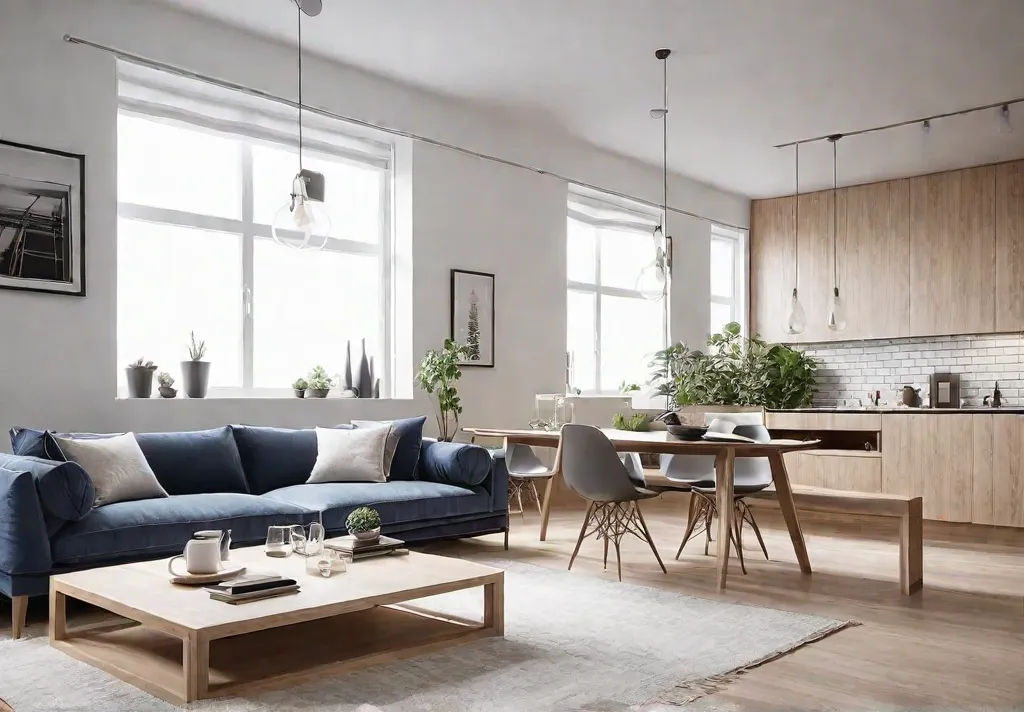Are you tired of feeling cramped in your apartment? Do you wish to create a more open, stylish living environment without sacrificing precious square footage? If so, you're not alone. Many apartment dwellers struggle to make the most of their limited space while maintaining an aesthetically pleasing home.
But fear not! This article explores eight innovative apartment decorating ideas to help you transform your compact living quarters into a functional and fashionable retreat. By incorporating these strategies, you'll maximize your space, enhance your style, and create a home that truly reflects your personal taste.
We've covered you, from multifunctional furniture to strategic lighting and optical illusions. So, let's dive in and unlock the full potential of your apartment!
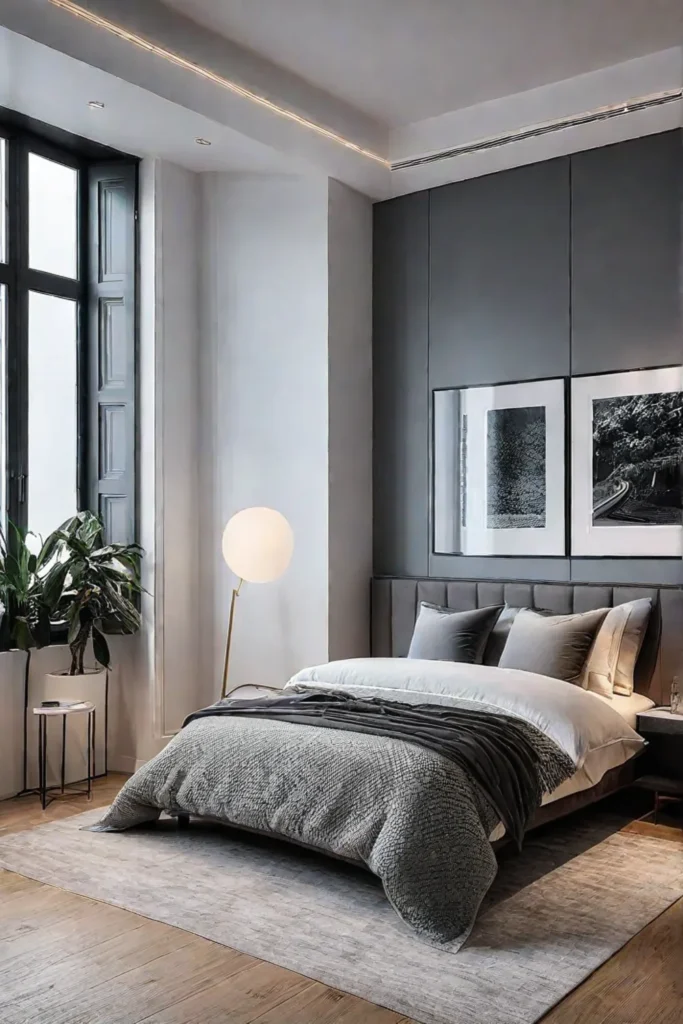
Utilize Multi-Purpose Furniture
One of the best ways to maximize space in your apartment is by investing in furniture that serves multiple functions. Multifunctional pieces save valuable square footage and add a touch of sophistication to your decor.
Consider a sofa bed, for example. During the day, it provides a comfortable seating area; at night, it effortlessly converts into a cozy sleeping spot for guests. Or how about a storage ottoman that doubles as a coffee table and extra storage for blankets, books, or seasonal items? These versatile solutions allow you to streamline your living space without compromising on style or functionality.
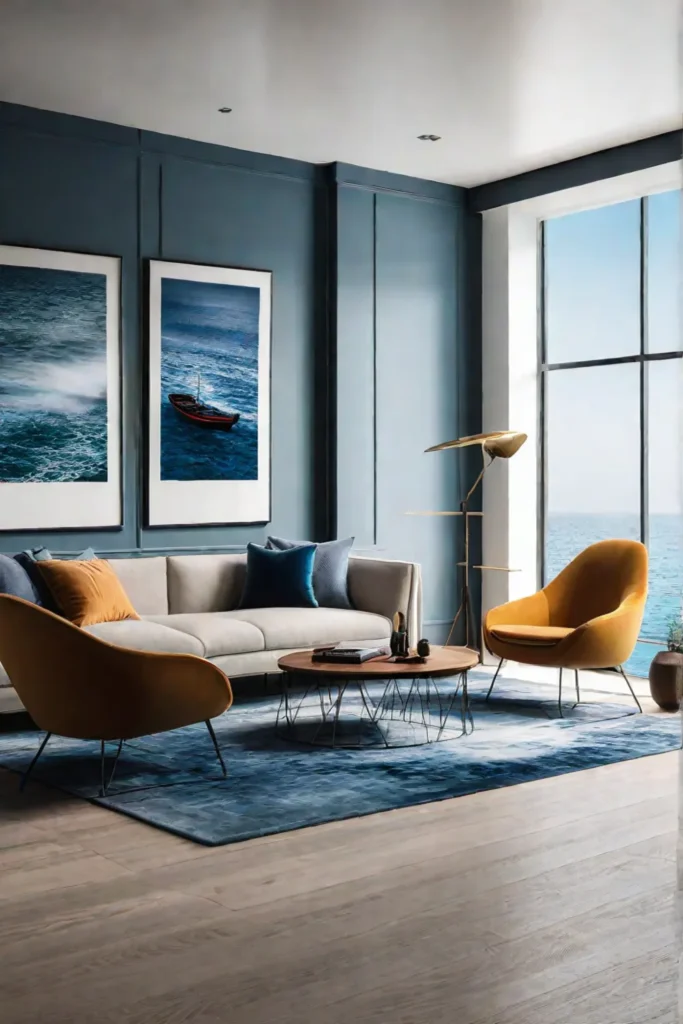
When selecting multifunctional furniture, carefully measure your available space and choose pieces that complement your apartment's design. With the right combination of convertible and space-saving furnishings, you can create a cohesive, clutter-free environment that caters to your daily needs.
Incorporate Mirrors and Reflective Surfaces
Mirrors and reflective surfaces are powerful tools for creating the illusion of a larger, more open apartment. By strategically placing these design elements, you can enhance your living space's perceived size and brightness.
Wall mirrors, for instance, can reflect light and create the impression of additional depth, making a room feel more spacious. Mirrored furniture, such as coffee tables or side tables, can also contribute to this effect by scattering light throughout the area.
Another clever trick is incorporating glass tabletops or backsplashes in your kitchen and bathroom. These reflective surfaces add a touch of elegance but also help to amplify the available light, creating a more airy and inviting atmosphere.
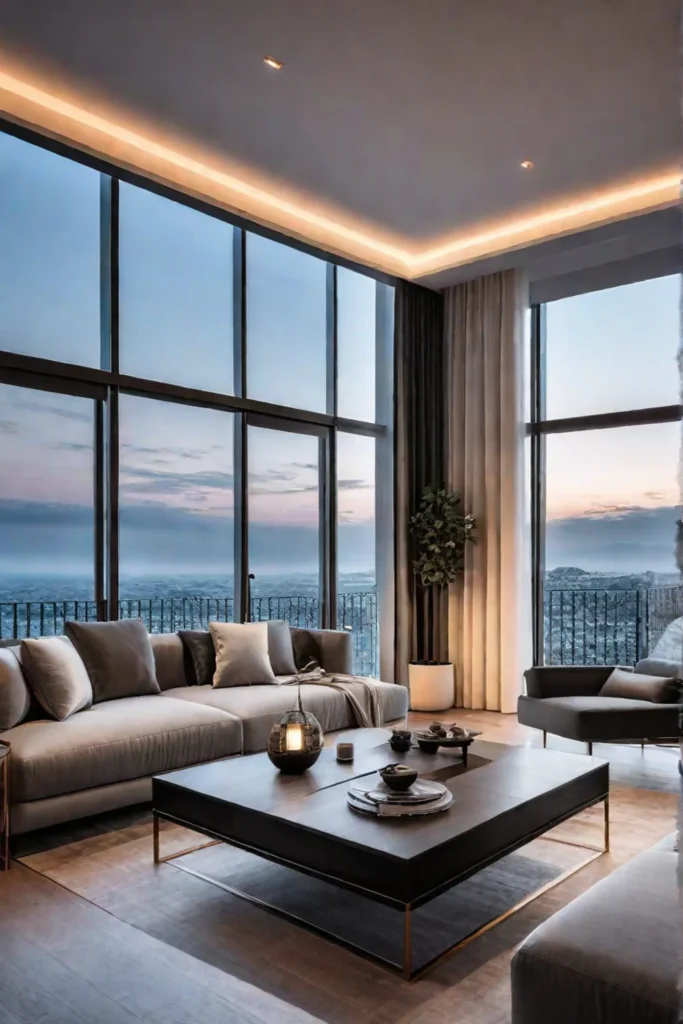
When choosing mirrors and reflective surfaces, consider the size, shape, and placement to ensure maximum impact. Opt for pieces that complement your apartment's existing decor and help accentuate the room's natural light sources.
Maximize Vertical Space
One of the most overlooked strategies in apartment decorating is using vertical space. You can create additional storage and display areas without cluttering your floor plan by taking advantage of the often-underutilized walls and ceiling.
Wall-mounted shelves, for instance, are an excellent way to keep books, plants, and decorative items organized and accessible, all while freeing up valuable floor space. Hanging storage solutions, such as pegboards or over-the-door organizers, can also neatly store and showcase your belongings.
Consider installing ceiling-mounted racks or shelves to store larger items like suitcases, sports equipment, or even bicycles if you can. This clever use of vertical space can significantly increase your apartment's overall storage capacity without compromising the open, airy feel you're trying to achieve.
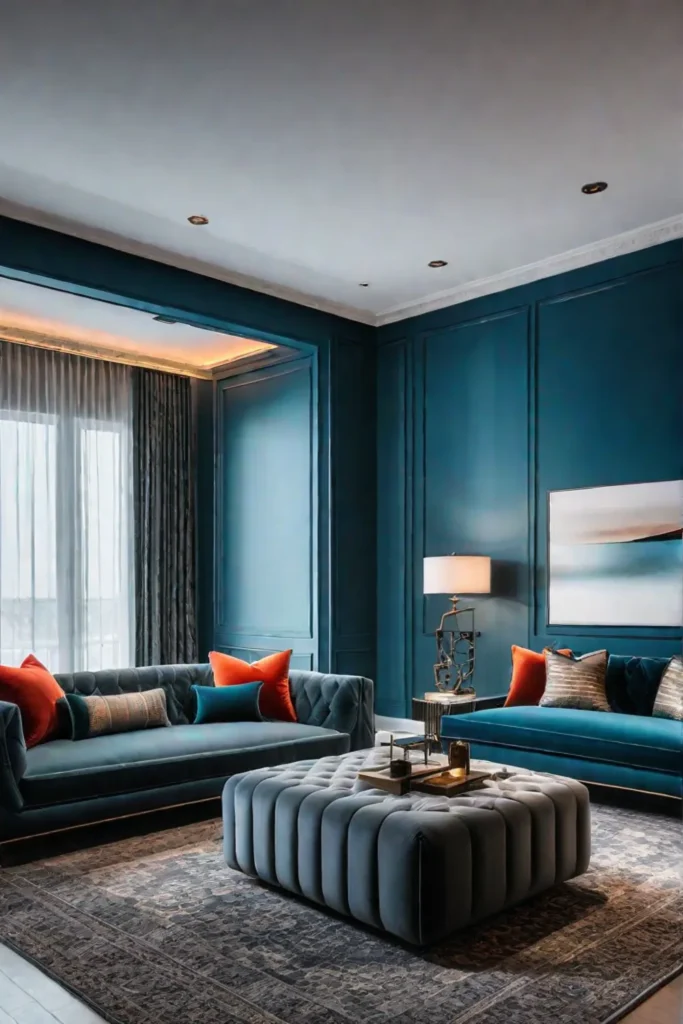
When incorporating vertical storage solutions, consider the overall aesthetic and choose pieces that complement your apartment's design. By blending form and function, you can create a visually appealing and highly efficient living environment.
Strategize with Lighting
Proper lighting is crucial for creating a warm, inviting atmosphere in any apartment, but it's especially important in smaller living spaces. Thoughtfully designing your lighting scheme can make your apartment feel more spacious, functional, and visually appealing.
Start by considering the different types of lighting you can incorporate, such as overhead fixtures, task lighting, and ambient illumination. Combining these elements can help balance the brightness and create a cohesive, well-lit environment.
For example, a central pendant light or ceiling fan can provide general overhead lighting. At the same time, floor lamps and table lamps can offer focused task lighting for specific areas, such as a reading nook or a home office. Ambient lighting, such as wall sconces or string lights, can then be used to add a soft, inviting glow throughout the space.
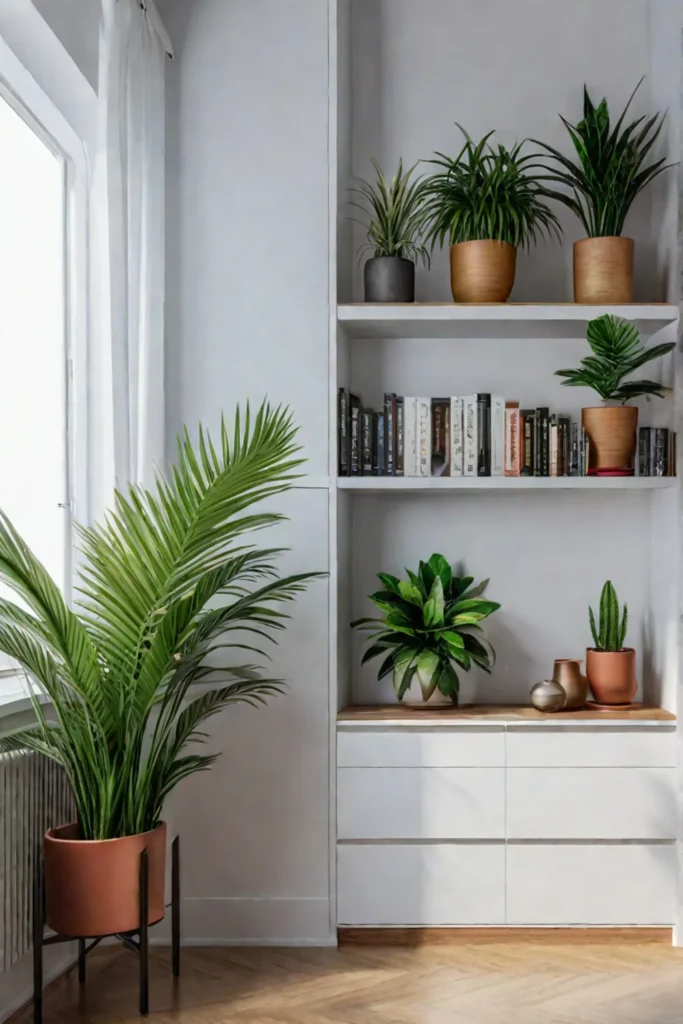
Remember to take advantage of natural light as well. Strategically positioning mirrors and reflective surfaces can help bounce sunlight around the room, making it feel brighter and more open.
By carefully layering your lighting and maximizing natural illumination, you can create the illusion of a larger, more welcoming apartment that caters to your daily needs and personal style.
Define Flexible Zones
In a small apartment, creating a sense of organization and flow throughout the living space is essential. One way to achieve this is by defining flexible zones using various techniques, such as room dividers, area rugs, and strategic furniture placement.
Whether freestanding screens or built-in bookshelves, room dividers can help delineate different areas within your apartment without closing off the space completely. This allows you to maintain an open, airy feel while creating a sense of privacy and separation between zones, such as a living room and a home office.
Area rugs can also be used to define specific zones within a room. For instance, by placing a large rug under your seating arrangement, you can create a cozy living area that feels distinct from the surrounding space. Smaller rugs can then mark out other zones, such as a dining area or a home workspace.

Finally, consider how you arrange your furniture. Grouping pieces can help establish distinct zones, while positioning them against walls can create a more open, flowing layout. Multifunctional furniture, like a sofa bed or a storage ottoman, can also contribute to this flexible zoning approach by serving multiple purposes within a single space.
By incorporating these zoning techniques, you can transform your apartment into a cohesive, organized living environment that caters to your various needs and activities.
Embrace Minimalist Decor
Adopting a minimalist approach to apartment decorating can create the illusion of a larger, more open living space. By embracing the principles of minimalism, you can declutter your home, simplify your color palette, and choose furniture and decor that complement a clean, uncluttered aesthetic.
Start by identifying and removing any unnecessary items from your apartment. Donate, sell, or recycle anything that doesn't serve a clear purpose or bring you joy. This decluttering process frees up physical space but also helps to reduce visual clutter, making your home feel more spacious and serene.
Next, consider your color scheme. Opt for a neutral palette of whites, grays, and beiges, which can help create a sense of cohesion and make the space feel more expansive. Avoid busy patterns or bold colors that can overwhelm a small room.
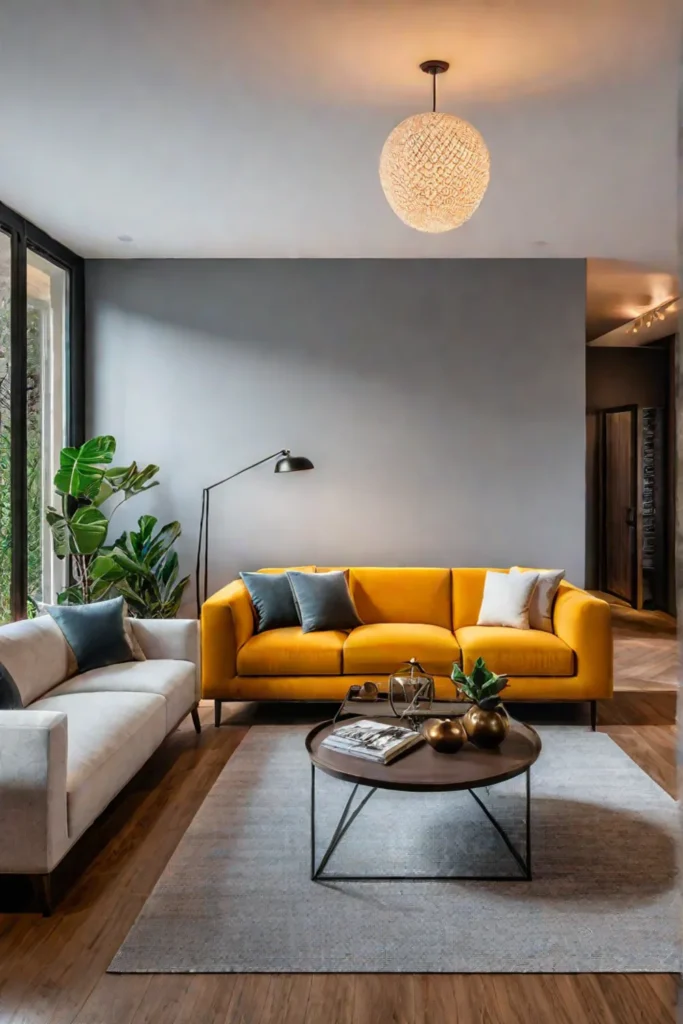
When selecting furniture and decor, choose clean-lined, functional, and visually unobtrusive pieces. Multifunctional items, such as a coffee table with built-in storage or a convertible sofa bed, can help maximize your available space without compromising style.
By embracing minimalism, you'll create the illusion of a larger apartment and foster a calming, stress-reducing environment that promotes well-being and relaxation.
Utilize Multifunctional Spaces
In a small apartment, making the most of every square inch is crucial. One way to accomplish this is by designing multifunctional spaces that serve multiple daily purposes.
For example, consider combining your living and dining areas into one open-concept zone. During the day, this space can be a comfortable lounge for relaxing or entertaining guests. At mealtimes, the area can seamlessly transition into a dining room, with a table that can be easily extended or folded away when not in use.
Another clever idea is to incorporate a Murphy or convertible sofa bed into your apartment's design. Depending on your needs, these space-saving solutions allow you to transform a single room into a living area and sleeping quarters.

When planning multifunctional spaces, be mindful of the flow and functionality of the area. Carefully arrange your furniture to create a cohesive, organized layout, and choose pieces that can adapt to different uses, such as a desk that can double as a dining table or a storage ottoman that serves as both seating and a coffee table.
By embracing the concept of multifunctional spaces, you can maximize the utility of your apartment while maintaining a visually appealing and stylish living environment.
Leverage Optical Illusions
Finally, let's explore a unique and creative way to make your apartment appear larger: optical illusions. By incorporating strategic design elements that play with our visual perceptions, you can create the illusion of a more spacious living environment.
One effective technique is using striped patterns, particularly on walls or floors. Horizontal stripes can make a room feel wider, while vertical stripes can create the impression of greater height. Geometric shapes like triangles or squares can also manipulate our sense of depth and proportion.
Another optical illusion trick is to play with color contrasts. Pairing high-contrast hues, like black and white, can draw the eye away from the room's boundaries, making it seem more expansive. Conversely, using darker colors on the walls can make the ceiling appear taller, further enhancing the perception of space.

When incorporating optical illusions into your apartment decor, be mindful of balance and proportion. Experiment with different patterns, shapes, and color combinations to find the right balance that complements your style and the overall design of your living space.
Conclusion
By implementing these eight innovative apartment decorating ideas, you can transform your compact living quarters into a stylish, functional, and visually captivating retreat. From multifunctional furniture and strategic lighting to flexible zoning and optical illusions, each strategy offers a unique approach to maximizing your available space and enhancing your overall living experience.
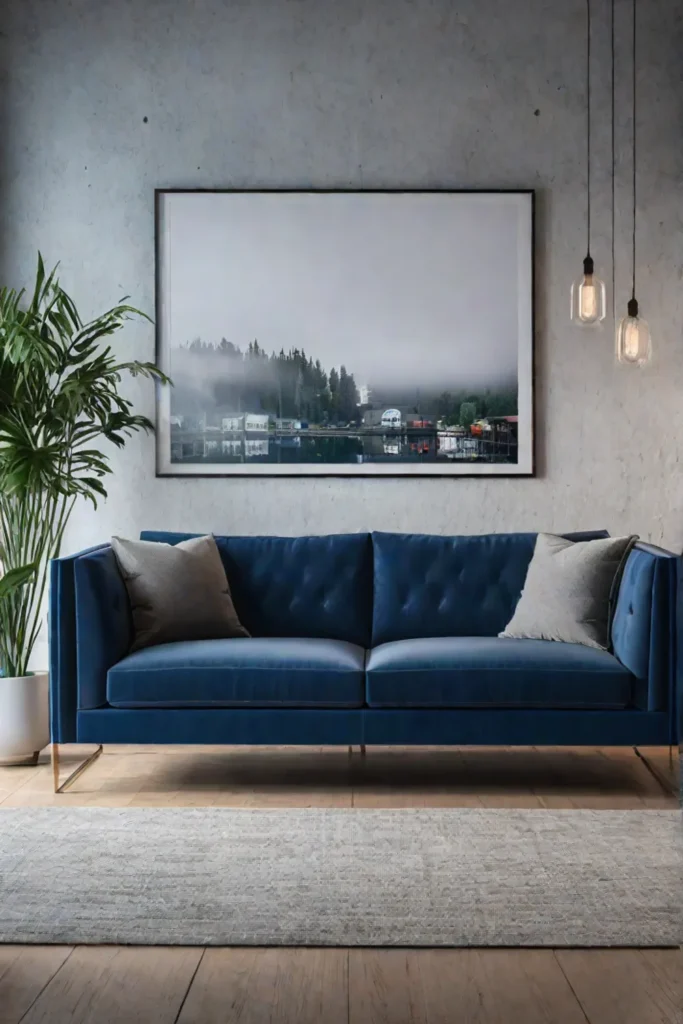
Remember, the key to successful apartment decorating is finding the right balance between form and function. With a little creativity and a keen eye for detail, you can create a home that looks amazing and caters to your daily needs and personal preferences.
So, what are you waiting for? Start incorporating these space-saving and style-boosting ideas into your apartment decor today, and get ready to unlock the full potential of your living space!
